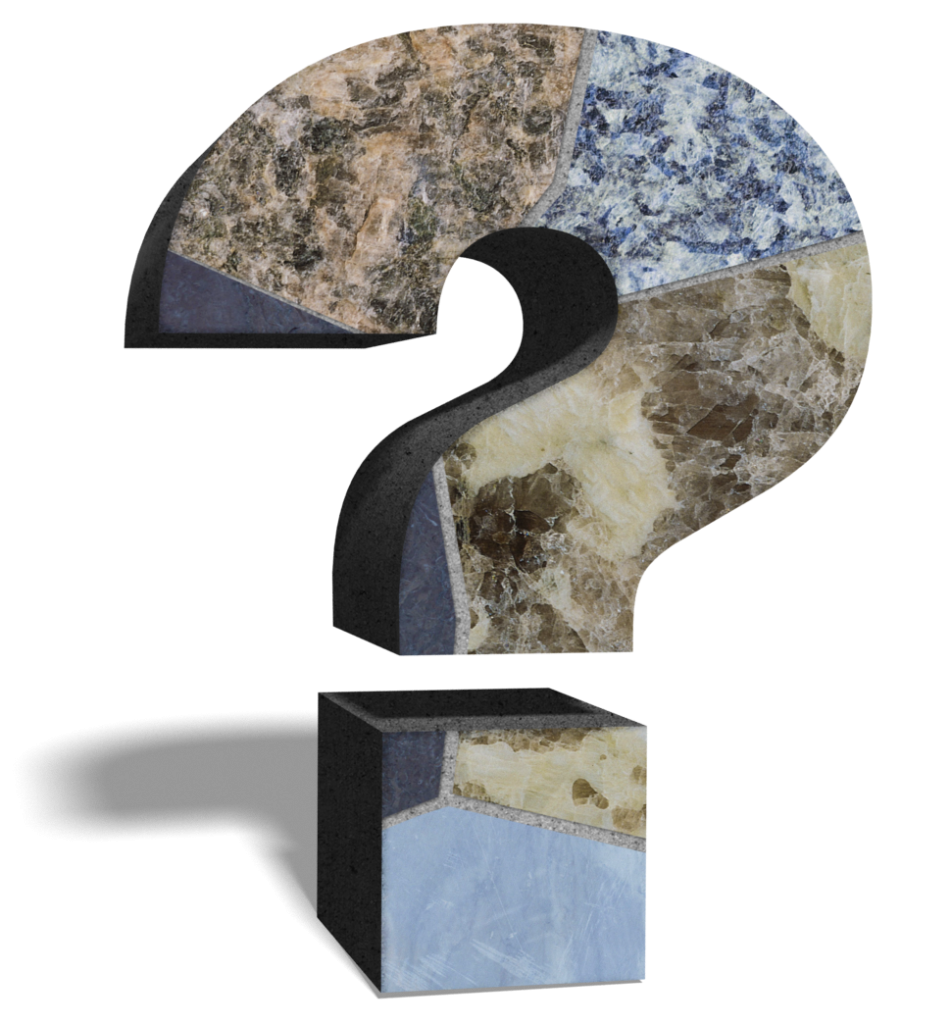Choosing the Right Stone
Choosing the right stone means understanding many issues which are dependent on:
- Where the stone is to be used, indoor or outdoor, walls or paving, cold or hot climates
- Which type of stone is suitable for your project: Granite, quartzite, marble, slate, limestone, sandstone, basalt, soapstone, field stone, and many others
- Size of stone pieces, thickness, quantity required, and the time frame for delivery
- Color and texture, or finish of the stone
- Price of the stone, and equally important, the cost of installation
- Variation of the stone affects selection of the stone as some stone has a lot more variation then others
- Maintenance is a factor in that some buyers want a stone that is almost maintenance free or very little work to take care of
The big question for most buyers is how to choose the right stone for their project, whether a large commercial project or
something smaller like picking a paver for the patio or a granite kitchen countertop. Each has its own method of selection. Most buyers do the obvious, they go to a retailer such as Home Depot or Lowes, or some granite kitchen top fabricator and pick a color. But is this the right way to select a stone? The first thing to think about is what exactly is the project and use of the stone that you wish to buy. The reason for this is to better understand which stone type you want to use. There are many choices of stone for a project, but you must first pick the right stone type that is durable for the project use. For example, don’t pick an interior stone that is soft for an exterior paving job, which means you must know the stone types available in the market. Another example, for the kitchen there is granite, quartzite’s, marbles, soapstones, slates, and some have even gone to the lesser used stones such as sandstone, basalt, and other natural stone. Each stone has a durability and a specific maintenance issue related to it. Researching the right stone to use is most important. Study by going online and asking questions at each place you visit, reading magazines and other related publications, or getting a stone consultant.
The second thing you want to ask is what are the various finishes you can have for your project as each stone may have a variety of finishes and sometimes it depends on the fabricator. Picking the right fabricator or supplier and finish is important as not all suppliers are equal, nor is the right installer. The finishes may have further maintenance issues but the texture of the stone can really affect the look of the job. Knowing the size of the stone pieces and the thickness you want to have is also important. Returning to the example of the kitchen top, some have reduced costs by using tiles in 3/8″ thickness, while the standards in some states is 2 cm or 3/4″, and in other states it is now 3 cm or 1-3/16″ thick. Today buyers are seeing more and more thicker stone like 4 cm to 6 cm (1-1/2″ to 2.5″ thick) which really gives an added dimension and look to the stone, as will selecting the right edge finishing to show the depth of the stone and change the overall appearance of the stone. Further, putting the right corner details and radius corners or other treatments are as important as to where you make the joint or corner L-shaped stone areas. The finish then changes the look entirely and many are going away from the traditional polished finish to textured finishes, antiqued, leather, sandblasted, bush hammered, brushed and many others with newer ones coming out yearly.
Then there is the issue of how much variation there is in the stone itself. Seeing the stone in small samples is never like seeing it in multiple slabs. The stone may have veining or movement, and may have very little at one end and a lot at the other. Slabs can vary according to quarries or shipments or even which year it is, or where they are in the quarry as some stones have much more variation than other stones do. If you have seen a stone, try going to various warehouses who stock the same slabs and compare them and you will find this to be a true education. Never pick a stone solely on a small sample or only on its color. Getting the right color is tricky and even among designers is a gamble, and no two people will always agree on selecting the right color or even stone.
Another key factor in choosing the right stone is the technical data, which means its absorption, hardness and durability, and this is definable by ASTM standards. Each stone has a series of testing and standards that make that stone a good stone to use for its specific application. Most stone applications for buyers is cosmetic, like picking a wall paper, and not structural. However, they want a thicker material to look massive and sometimes will select a stone to have a glued up laminated thicker edge. Stone is versatile. Going back, the size issue in many cases affects the thickness of the stone. For example, small tiles can be 1 cm thick (3/8″), but the larger the tile the thicker the stone. If the tiles or pavers are 48″ x 48″, you might need a stone that is 3 cm or even 4 cm thick. Some buyers want wall panels of 5 feet x 9 feet, but the stone does not come in that size, or they require 50,000 square feet in a short period of time yet the stone is not available in that large a quantity in the selection required. All of these are factors in why choosing the right stone is important. Why select a stone to find out you can’t get it? Some architects have specified a stone and then at the last moment when the stone is required at the job, a change in the stone is needed in order to have any stone at all.
All of these issues are just as important as the color, application, and which stone type and finish to use. It is important to spend a good amount of time researching the stone and/or using a good stone consultant who can help you get through this tedious project in a large scale more quickly. Picking a stone for interior versus exterior, vertical or horizontal surfaces, around wet areas or dry, in cold or very hot climates, near the ocean or even if is just around a urinal in a public restroom, are all factors in choosing the correct type of stone. What is the price or cost of that stone, and is it affordable or in the budget? Many jobs have selected a beautiful stone only to find out it is unaffordable. Another issue is to know the cost of installation as this is just as important as knowing the cost of the stone.
Finally the maintenance is a consideration as some stones are more costly to maintain than other stones, and everyone needs to know how much it costs or how much work it will take to care for the stone. Most stones will require a good sealer to protect the stone from the elements, even if it is just soap or lemons and tomatoes with their acidic juices. Some sealers require periodic re-application to keep the protection up. Knowing how to maintain the stone after it is installed is key to protecting your investment.
